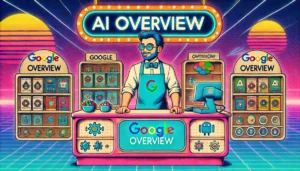5 Critical Stages of Business AI Transformation: From Customer Experience to Operational Excellence
“We need to implement AI” has become a common refrain in business meetings. But between chatbots, automation tools, and countless AI platforms, where do you actually start? Here’s the good news: successful AI transformation doesn’t require turning your entire business upside down overnight. Our experience has shown that starting with customer experience improvements creates a…
“We need to implement AI” has become a common refrain in business meetings. But between chatbots, automation tools, and countless AI platforms, where do you actually start?
Here’s the good news: successful AI transformation doesn’t require turning your entire business upside down overnight. Our experience has shown that starting with customer experience improvements creates a natural pathway to broader operational transformation.
Let’s explore the five critical stages that will take you from initial AI implementation to full business transformation – without overwhelming your team or disrupting your operations.
1. Customer Experience Assessment Stage
Think of this as your transformation GPS. Before rushing to implement AI everywhere, start where the impact is most visible: your customer touchpoints.
The reason is simple: your website and customer service channels are where AI can deliver immediate, measurable value while building your team’s confidence with AI technologies.
Quick win: Get a professional Smart Site Assessment (what we call our Operator Optimizer) to evaluate your website’s AI readiness. This reveals immediate opportunities for improvement without disrupting current operations.
Why it matters: Starting with customer experience:
- Provides immediate, visible ROI through improved customer service
- Creates less organizational resistance than internal changes
- Builds confidence in AI implementation
- Reveals insights that guide broader transformation
Pro tip: Focus first on identifying repetitive customer service tasks that AI could handle. These quick wins build momentum for bigger changes.
2. External AI Implementation Stage
With your assessment complete, it’s time to make AI work for your customers – and learn valuable lessons along the way.
This stage focuses on implementing an AI-ready website architecture that serves as your foundation for both customer service and future operational improvements.
Quick win: Launch an AI-powered website using our Smart Sites platform, enabling features like intelligent search and automated customer support.
Why it matters:
- Customers get immediate benefits from better service
- Your team gains practical experience with AI systems
- You create the technical foundation for future AI initiatives
- Reduced customer service load gives teams time to focus on transformation
Pro tip: Start with one key customer service challenge. Perfect that before expanding to other areas.
3. Knowledge Base Development Stage
This is where customer service improvements begin flowing into operational benefits. Think of it as building a bridge between external service and internal operations.
Quick win: Create a unified knowledge base that serves both customers and internal teams. Start with your most frequently asked questions and critical processes.
Why it matters:
- Creates a single source of truth for your organization
- Reduces duplicate efforts between teams
- Prepares your content for AI consumption
- Improves both customer service and internal operations simultaneously
Pro tip: Document the questions your customer service team answers most often. This becomes valuable training data for both customer-facing and internal AI systems.
4. Internal Operations Transformation Stage
Now we’re taking what we learned from customer-facing AI and applying it internally. This is where Brain-E, our internal AI assistant, comes into play.
Quick win: Identify one internal process that could benefit from AI automation – ideally something that directly impacts customer service quality.
Why it matters:
- Operational improvements directly enhance customer experience
- Teams are now comfortable with AI from earlier stages
- Integration between customer-facing and internal systems becomes seamless
- ROI compounds as improvements connect
Pro tip: Look for processes that connect customer service with internal operations. These integration points often offer the highest return on AI investment.
5. Advanced Integration Stage
This is where transformation becomes truly revolutionary. With both customer-facing and internal AI systems in place, you can begin creating custom solutions that set you apart from competitors.
Quick win: Develop one custom integration that connects customer insights with operational systems, creating a feedback loop of continuous improvement.
Why it matters:
- Creates unique competitive advantages
- Enables predictive rather than reactive operations
- Builds a self-improving system
- Maximizes return on all previous AI investments
Pro tip: Focus on creating systems that get smarter over time by learning from both customer interactions and operational data.
The Path Forward
The beauty of this staged approach is that each step builds naturally on the ones before it. By starting with customer experience, you:
- Generate early wins that build confidence
- Create momentum for bigger changes
- Develop practical AI experience
- Build systems that work together seamlessly
Remember, the goal isn’t to transform everything overnight. It’s to create sustainable change that improves both customer experience and operational efficiency.
Ready to start your transformation journey? Begin where successful transformations often start – with a Smart Site Assessment. This will help you understand your starting point and create a clear roadmap for both customer experience improvements and operational transformation.
Schedule your Smart Site Assessment today and discover how customer experience improvements can kickstart your AI transformation journey!
Have a Question? Want More Insights?
ProBot is here to help!








